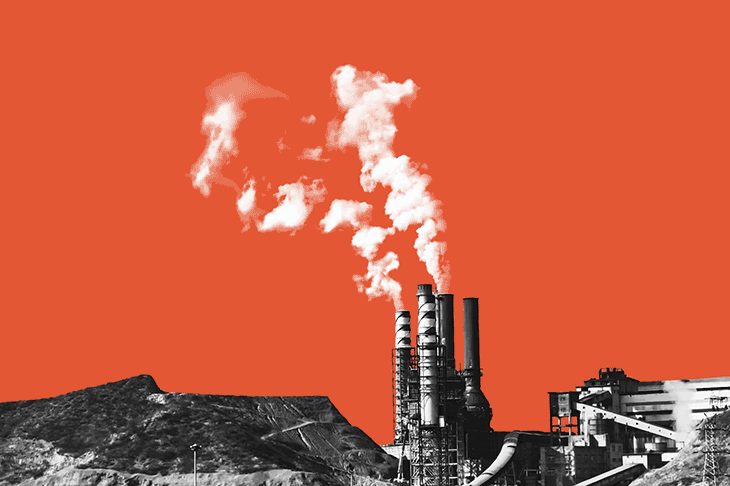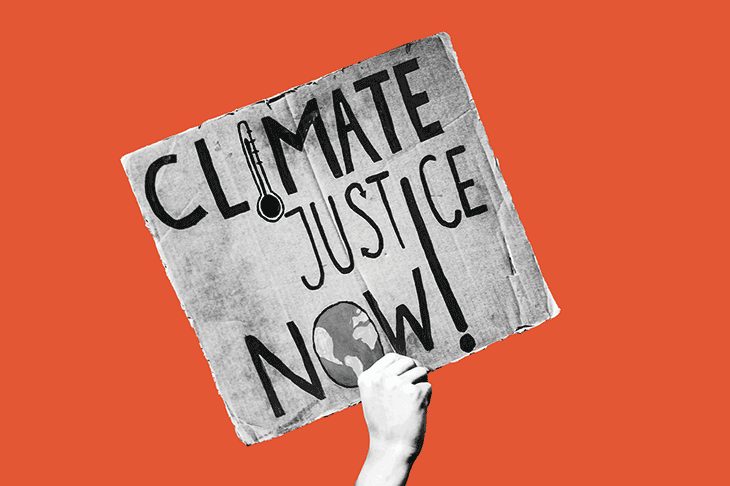This resource is available in Spanish
1. Know your audience
More and more people understand that climate change is real, happening now, and caused by human activities. The depth of this knowledge, however, varies widely. Understanding audiences’ beliefs and feelings about climate change helps journalists to deliver stories that resonate and build trust. So meet audiences where they are — and keep listening for how their views might change as their exposure to the climate story increases. See: Yale Program on Climate Change Communication — ‘Yale Climate Opinion Maps’ (US) and International Public Opinion on Climate Change (global)
2. Make the climate connection
Climate change is caused mostly by burning oil, gas, and coal, and is driving more extreme heat waves, droughts, storms, and sea-level rise. Yet these foundational facts are often missing from news coverage, leaving audiences misinformed. Making the climate connection — both to the causes and the consequences of climate change — is a must. And doing so doesn’t need to distract from the rest of the story — a few well-chosen words can do the trick. See: CCNow’s ‘Your Guide to Making the Climate Connection’
3. Remember, climate is a story for every beat
Climate change is the defining story of our time. Rising global temperatures affect everything — and in turn are affected by everything from government elections, corporate decisions, and other social forces. Good journalism, therefore, must not restrict climate coverage to the science and weather beats. No matter what your specialty is — politics, business, health, housing, education, food, national security, entertainment, sports, you name it — there are strong climate connections to highlight. See: CCNow’s ‘Covering Climate Across Beats’
4. Humanize and localize the story
Climate change is a huge, global story, but, at its core, it’s a story about ordinary people and their daily lives. Audiences want coverage that reflects this, including first-hand perspectives on how people are experiencing climate change and what they can do about it. But climate change manifests differently in different places, so it’s vital that reporting illuminates the specific ways climate change unfolds locally.
5. Center climate justice
Marginalized groups generally suffer first and worst from heat waves, floods, and other climate impacts, yet their voices and stories are often omitted from news coverage. Good climate reporting highlights their travails and recognizes that sometimes they are innovators in the climate fight. Indigenous groups in particular have been environmental protectors for time immemorial, and their insights are critical for identifying climate solutions. See: CCNow’s ‘Climate Justice Reporting Guide’
6. Know the science, but talk like a real person
Journalists should know the basics of climate science when covering this story, but take care to avoid jargon, a known turn-off to audiences. Accurate but simple and clear language is most likely to connect with audiences: For example, instead of a word like “biodiversity,” try “wildlife” or “nature.” See: CCNow’s ‘Climate Science 101’
7. Tell the whole story, including solutions
Good climate reporting includes the solutions, not just the problem. A focus on negative stories not only leaves the public feeling overwhelmed and inclined to tune out, it also misrepresents reality. The fact is, there are many solutions to climate change — not only technological ones like wind and solar energy, but also political, economic, and cultural ones. Good solutions reporting is not activism or cheerleading; rather, it interrogates potential solutions in order to inform the public and policymakers about which ones deliver, and which ones don’t.
See: CCNow and Solutions Journalism Network’s ‘Climate Solutions Reporting Guide’
8. Beware of greenwashing
Companies and governments are waking up to public demands for eco-conscious practices. Pledges to “go green,” however, often amount to little more than marketing campaigns that obscure business as usual. Be fair but skeptical of grand promises about “sustainable” products and “net-zero” emissions, especially from companies that historically have been a big part of the problem.
9. Treat activists like newsmakers
In some newsrooms there is a belief that covering activism is itself a form of activism or bias. That traditional mindset deserves a second look. Covering a protest, voter registration drive, or similar action does not make a journalist an activist any more than covering a football game makes them an athlete. Journalists should treat activists as newsmakers, holding them accountable and covering them with accuracy and fairness, just as we do with government and corporate officials.
10. Don’t get spun
The relatively new climate beat can get complicated fast, so journalists should take extra care not to fall for spin. We know that politicians, CEOs, and other powerful interests always have an agenda — complete with pre-rehearsed talking points — when they speak to the press. (The fossil fuel industry’s decades of peddling climate disinformation are an egregious case in point.) To avoid getting played, do your homework: Research their previous public statements, ask independent experts where the truth lies, and then don’t be afraid to push back.
11. Do not platform climate denialists
Platforming climate deniers in an effort to “balance” our coverage not only misleads the public, it is inaccurate. There is simply no good-faith argument against climate science. And if one accepts the science, one cannot deny the need for rapid, forceful action. Stories or op-eds that dispute the scientific consensus, or ridicule climate activism, don’t belong in news outlets. Where climate denialism cannot be avoided — if it comes from the highest levels of government, for example — responsible journalistic framing will make clear that it is counterfactual, if not rooted in bad faith. See: CCNow’s ‘It’s Scientists Who Call it a Climate Emergency’
12. Pick visuals carefully
When selecting imagery for climate stories, be sure that the photography represents the realities of global warming and the story at hand. Stories about extreme heat, for example, are better illustrated by images of frazzled people at a cooling center than by “fun in the sun” photos of beachgoers splashing in the waves.
13. Take care of yourself
Reporting on climate can be hard. Watching people and communities suffer from extreme weather and other climate impacts can be traumatizing. Bearing witness to unjust climate injuries, dismal scientific projections, and inadequate government action can lead to burnout and worse. So, seriously, take care of yourself. When you need a break, take it, and when you need help, get it.



